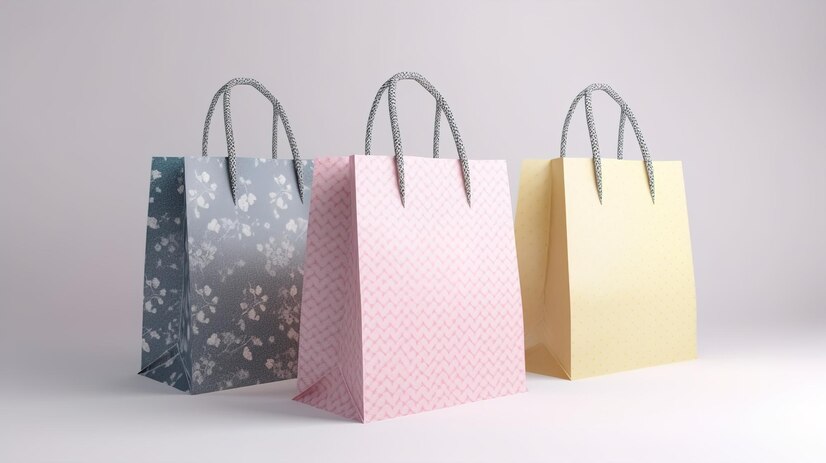In the world of packaging, paper bags have come of age. The form and functioning of these adaptable carriers have changed throughout time. From simple brown paper bags to bespoke creations that serve as fashion statements, the journey of paper bags is a testament to human creativity and innovation. In this blog post, we’ll delve into the fascinating evolution of paper bags, exploring their history, transformation, and the modern-day relevance they hold.
A Brief History of Paper Bags
From Utility to Ubiquity
Paper bags have been used for practical reasons since prehistoric times. Paper bags were first used in 2nd-century China under the Han Dynasty. These early bags were more akin to envelopes, crafted from mulberry bark. They served as a simple means to carry grains and other commodities.
After arriving in the West, paper bags became widespread in the 19th century. American inventor Francis Wolle developed the first paper bag machine in 1852. These early bags were rudimentary and needed more sophistication than we see today. They were plain, brown, and largely unadorned.
The Birth of Printed Paper Bags
The turning point in the evolution of paper bags came with printing technology. In the late 19th century, businesses realised the potential of using paper bags as a branding tool. They started to print their logos, advertisements, and product information on the bags. This marked the birth of printed paper bags.
The Evolution of Design
From Plain Brown to Vibrant Colours
One of the most significant transformations in paper bags was the shift from plain brown to a diverse spectrum of colours. As printing technology advanced, businesses could create eye-catching designs and use vibrant colours to attract customers. This change made paper bags more visually appealing and allowed firms to reinforce their branding.
These bags quickly became a symbol of prestige and status. High-end retailers began using custom-printed bags as a way to enhance the shopping experience for their customers. These bags weren’t just carriers but a part of the brand’s identity.
Embracing Sustainable Materials
In recent years, there has been a growing awareness of environmental issues, leading to a significant shift in the materials used for paper bags. Many businesses have switched to eco-friendly options, using recycled paper and sustainable printing ink. This evolution aligns with the global movement towards sustainability and responsible consumption.
The Modern-Day Relevance of Printed Paper Bags
Beyond Utility: A Fashion Statement
Today, printed paper bags are more than essential. They are now fashion statements. Luxury companies’ paper bags are designed and made better to provide clients with a luxury unpacking experience. These bespoke paper bags often feature intricate designs, embossing, and high-quality materials, making them collectable items for some.
Promoting Brand Values
In today’s competitive market, a well-designed printed paper bag is not just about carrying purchases; it’s a powerful marketing tool. Businesses use these bags to convey their brand values and identity. Whether it’s a commitment to sustainability through eco-friendly materials or a showcase of creativity through unique designs, printed paper bags play a crucial role in shaping the perception of a brand.
The Future of Printed Paper Bags
Innovations in Materials and Printing Techniques
The future of printed paper bags looks promising, with ongoing innovations in materials and printing techniques. More biodegradable coatings and water-based inks will lessen paper bags’ environmental impact. Businesses may also use digital printing technology to produce complex and personalised patterns on a vast scale, making each bag a work of art.
Integration with Technology
As technology continues influencing every aspect of our lives, these bags will likely integrate digital elements. We may see QR codes, NFC tags, or augmented reality features on bags, allowing customers to access additional information, discounts, or interactive experiences related to the brand.
Conclusion
The journey of paper bags from their simple beginnings to their modern-day sophistication is a testament to human ingenuity and adaptability. These humble carriers have evolved from useful tools to powerful branding instruments. They now represent a brand’s ideals and identity rather than merely delivering transactions.
As materials, printing methods, and technology advance, paper bags will become more important in retail and packaging. From high-end boutiques to neighbourhood stores, the printed paper bag will continue to impact consumers and help companies convey their stories.
If you get a wonderfully designed paper bag, take a minute to admire its progression from basic brown to customised brilliance. This journey continues in an ever-changing world. Printing paper bags has gone a long way, and their narrative continues.


